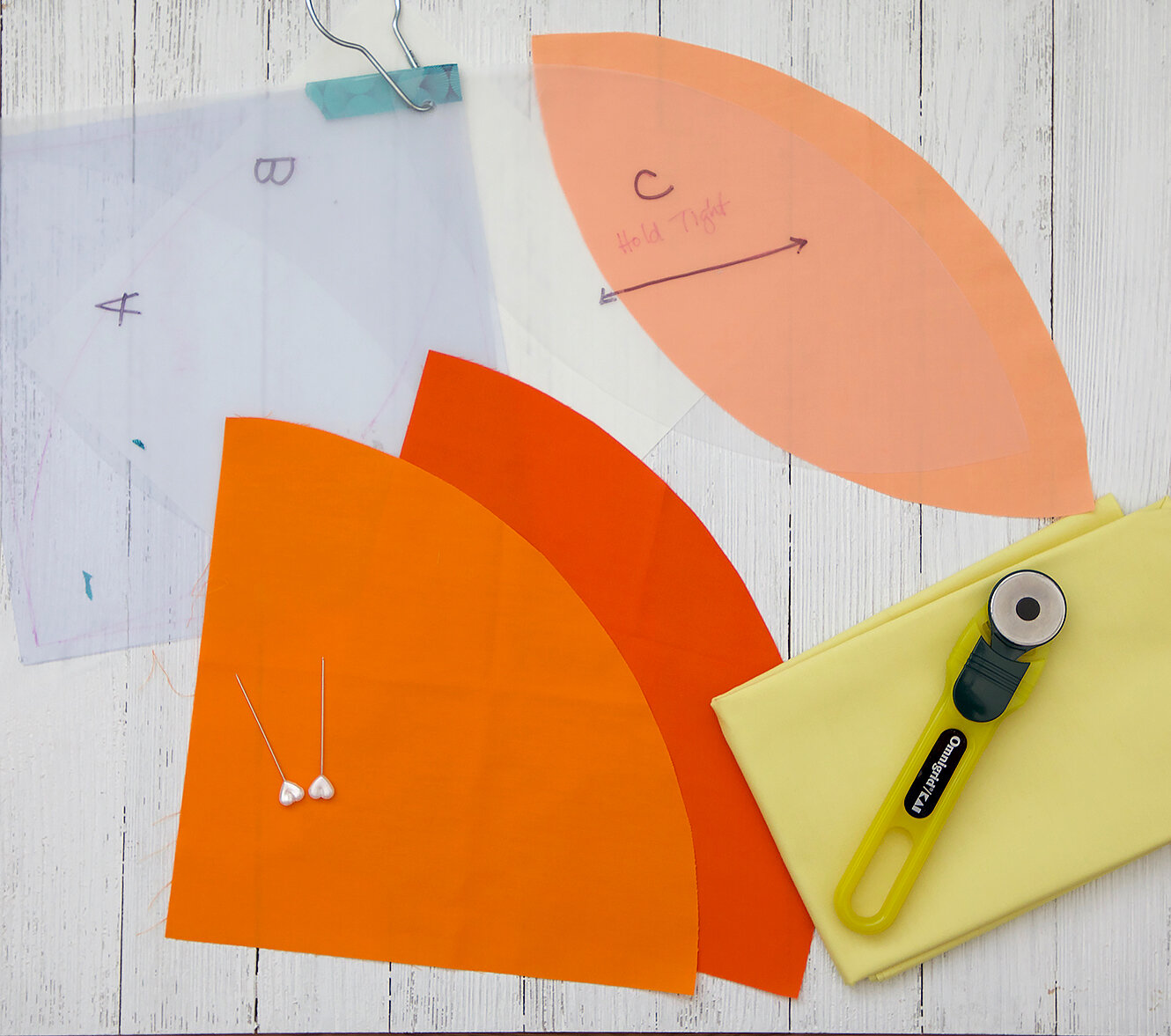Hold Tight Quilt Pattern Update
Hold Tight Petite by Sharon Holland
I’ve an important update for those who’ve purchased my Hold Tight quilt pattern and an apology for any frustrations the B template may have given you.
The original version of this pattern included an 8-1/4” square B template that proved troublesome to print out because one side would get cut off in the printing margin. On the second version I trimmed down the tips (just the tips, not the entire shape) to make the template 8” square and easier for printing. Neither one of these were acceptable and I am sorry for my dropping the ball on this one.
Well, third times a charm because this updated template that you can download for free from the Sew Along page prints out fully and is back to the original 8-1/4” square size. Please note, you’ll need to tape it together before creating your plastic template. It’s a happy medium compromise between the two problems.
The new B template page looks like the image above and you can download a print out HERE. Do not drag, screen shot, or use the image above as it is not a PDF quality for use. Instead, download the PDF from my Sew Along page.
Once you have the new B template PDF, you’ll need to print it to scale and carefully cut out the B1 and B2 shapes. Use the arrows to tape the two shapes together to create an 8-1/4” square B template. Transfer this full (whole) shape to your template plastic and follow the cutting instructions as given in any version of the Hold Tight quilt pattern.
Having this larger size B shape doesn’t change the curve of the template or how it’s pieced, it only gives you more wiggle room for sewing the curved pieces together and for trimming the block up to size using your Trimming template that’s included in the pattern—and who doesn’t love more wiggle room!?!?!
My sincere apologizes to anyone that’s had struggles with the cutoff print version or the smaller B template version of this pattern. I’ve uploaded an amended Week #2 video to YouTube explaining this update, so if you follow my YouTube channel and this blog then this blog post will cover the same information that the “new” video covers.
Any new pattern purchases of the Hold Tight quilt will reflect this B template change. You do not need to repurchase the pattern to get the updated B template page. Simply download a free page 11 B Template PDF from the Sew Along page.
I am an Amazon Associate site and earn from qualifying purchases on the products I’ve linked below. The helpful products selected are the same or similar to materials used to make the project(s) in this blog post or related items I think you may enjoy.



